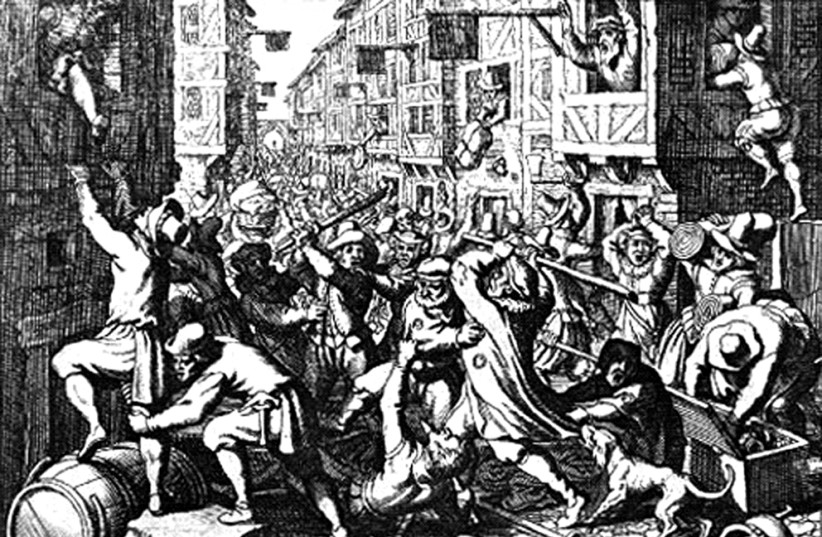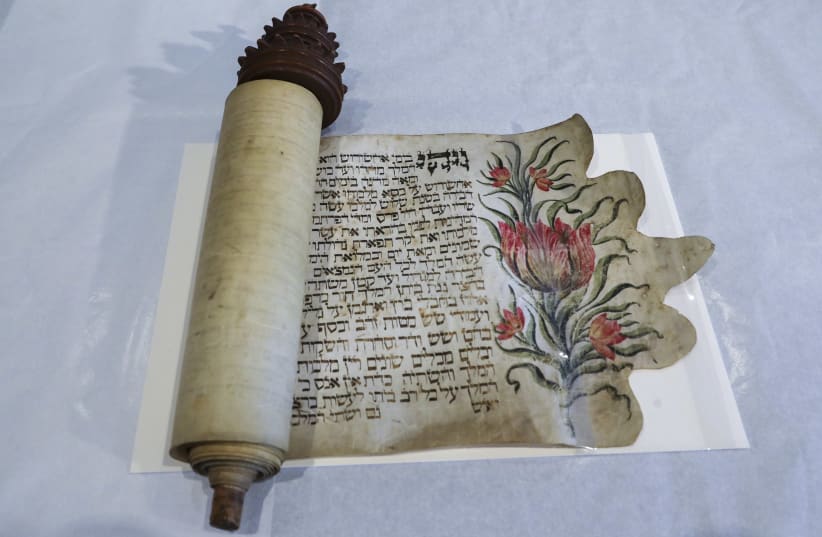Let’s think about it, and it will become obvious that the Purim story is the quintessential Diaspora Jewish experience – with a fairytale ending.
The Book of Esther is the only book in the Bible that is staged entirely outside of Israel. It is not a theological work. The names of the Jewish heroes and evil Persian villains in the Purim story are not Hebrew names – they are Persian names, now integrated into the Jewish lexicon of names. And the name of God, in any form, is never mentioned in the Book of Esther.
Jews are being persecuted. There is a plot to massacre all the Jews throughout the land, in all of its 127 provinces. At the last minute, the Jews are saved. Not only are they saved. Here the fairy tale takes on an added dimension – the Jews of Persia kill their plotters and thousands upon thousands of those who joined in the murder plot. The Jews even get a second day to seek out the plotters.
For good measure, the worst of the lot are hanged from the tallest tree. And in between, there are two lavish feasts.
The Purim story is the example par excellence of the joke that is told at some point during almost every Jewish holiday. Which 11 words do Jews say on every holiday? No, it’s not a phrase from the Hallel prayer. Those 11 words are: “They tried to kill us. They lost. We won. Let’s eat.”
“They tried to kill us. They lost. We won. Let’s eat.”
The 11 words Jews say on every holiday

ON A MORE serious note, this image of Jews being saved at the last minute has become a theme in Jewish history. For that simple reason, there are families and communities scattered throughout the Jewish world who – on various and different days – gather in celebration of their own, private Purim holiday. These celebrations are variously called Purim katan, mini Purim, second Purim, private Purim, family Purim, community Purim and city Purim.
A megillah describing the events of their special Purim was written by each family and community. Every year, each community or family would fast the day before the big day, just like the Fast of Esther on the day before Purim, and then gather to read their own megillah, followed, of course, by feasting and celebration.
The famous Purim stories of other Jewish communities
The cities of Hebron and Tiberias, in Israel; and Cairo, in Egypt, have two city or community Purims each – two separate days when the Jews of their city were saved from being killed. In Cairo, the ruler had proclaimed in 1524 that all Jews would be executed – after his bath. But during his bath professional assassins came and assassinated him. And so, the Jews were saved.
The most famous of all community Purims is the Vinz Purim. In 1624, there was an uprising in the Frankfurt Ghetto, known as the Jewish Ghetto or the Fettmilch Ghetto. The local leader of Frankfurt, Vincenz Fettmilch, sponsored pogroms and raided the Judengasse, the Jewish Street, and expelled the Jews.
Frankfurt’s Jews were saved by Matthias, emperor of the Holy Roman Empire. He intervened, arrested Fettmilch and six of his henchmen, and executed them, not the Jews. The Jews were allowed to return to their ghetto homes. The ensuing celebrations became known as Vinz Purim, named after the notorious murderer of Jews – a name as reviled in Frankfurt as Haman was for the Jews of Persia during the Purim story, and for Jews throughout history to this very day.
More than a century later, the Chatam Sofer (1762-1839), aka Rabbi Moses Sofer, who hailed from Frankfurt, would return to Frankfurt each year for Vinz Purim, even after he became the rabbi of Pressburg.
The importance of the Purim message
The Purim message has not been lost on Jew-haters. Adolf Hitler understood the message. And that is why he banned Purim. Julius Streicher, the Nazi propagandist and publisher of Der Sturmer, delivered a speech on November 10, 1938 – the day after Kristallnacht. In his speech, Streicher recalled that “the Jews butchered 75,000 Persians” in one night, as written in the Book of Esther.
He then went on to say that the same fate would have befallen the German people had the Jews succeeded in inciting a war against Germany from the inside. The Jews, he said, “would have instituted a new Purim festival in Germany.”
That’s powerful.
Other historic Purim celebrations in Jewish history have occurred in Yemen, Italy, Vilna and hundreds of other places and by hundreds of families. Today, unfortunately, most are no longer commemorated.
Yes, Purim has deep significance and history, especially in the Diaspora. One thing I can tell you for sure – Purim is not about the costumes.
Purim Sameach.
The writer is a social and political commentator. Watch his TV show Thinking Out Loud on the Jewish Broadcasting Service.
